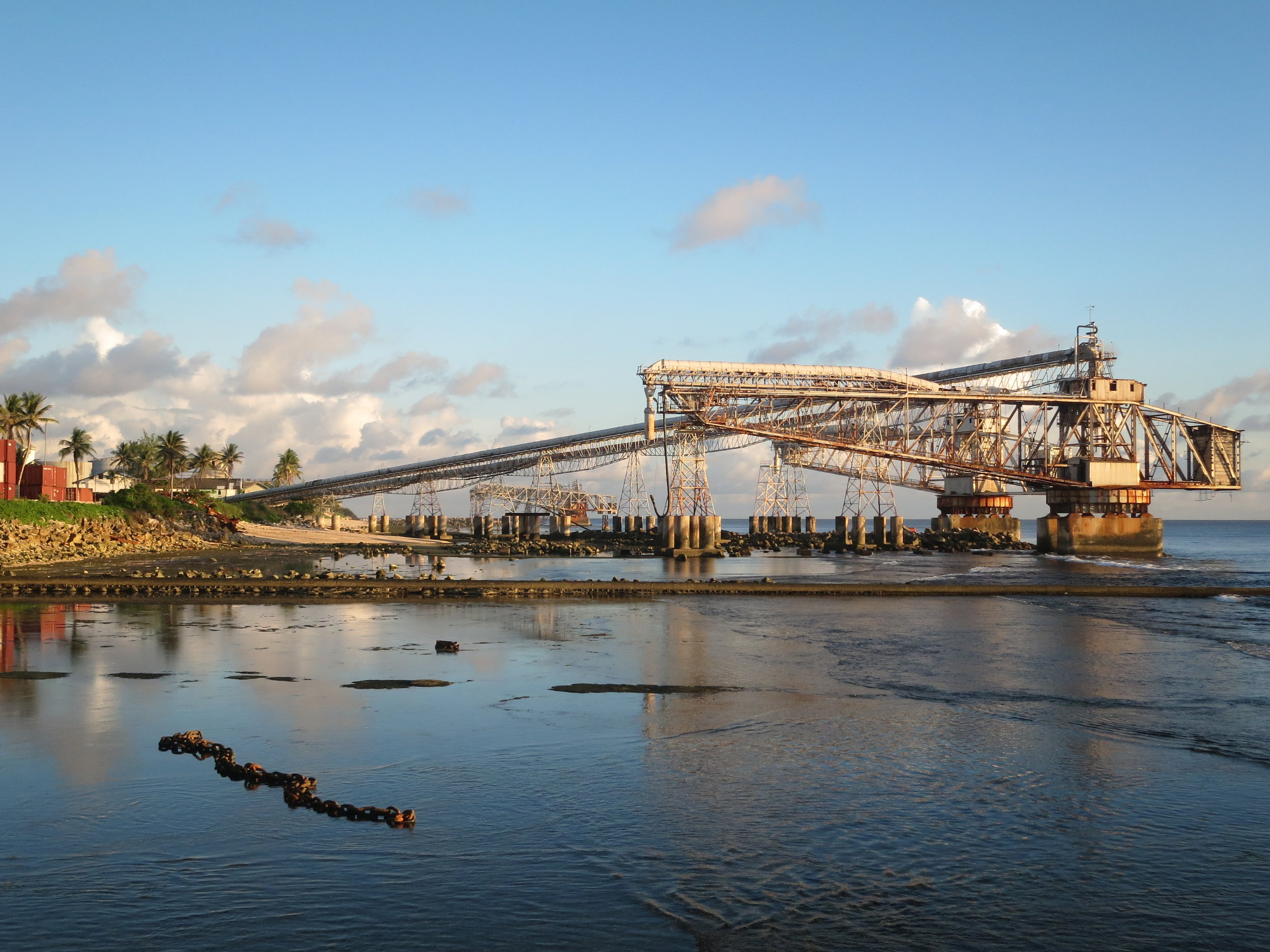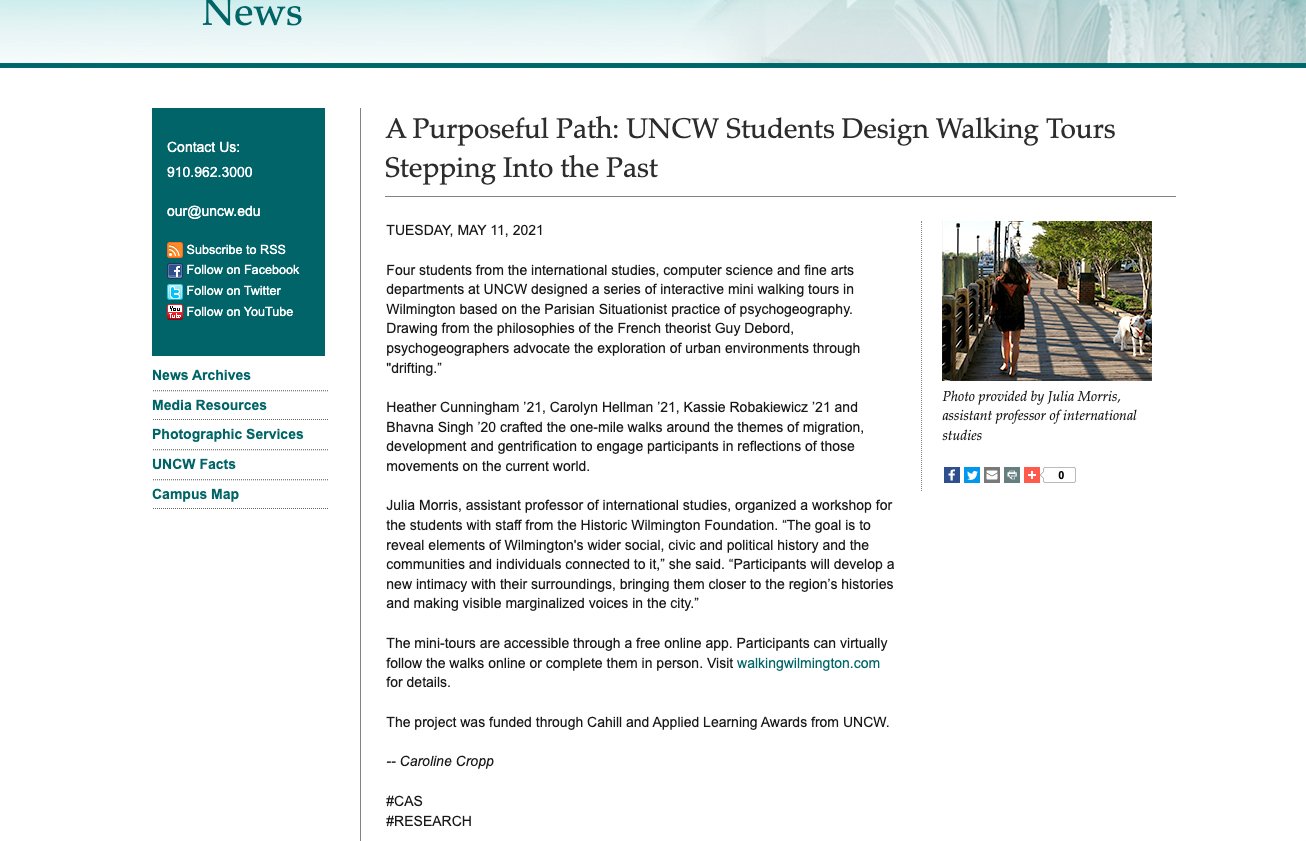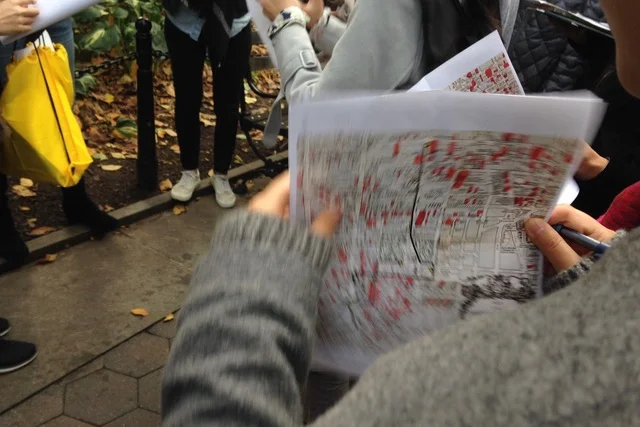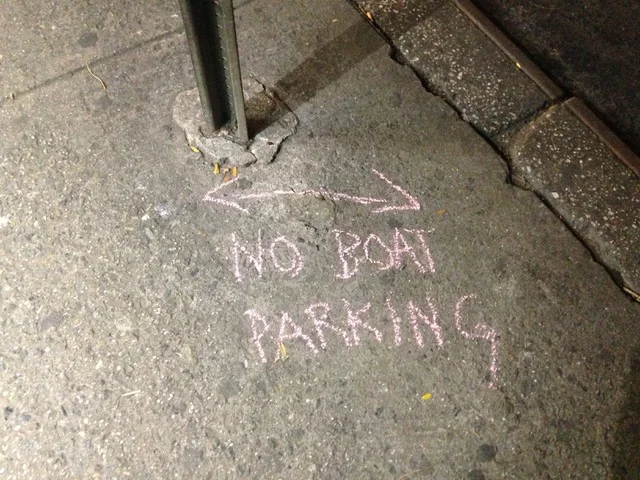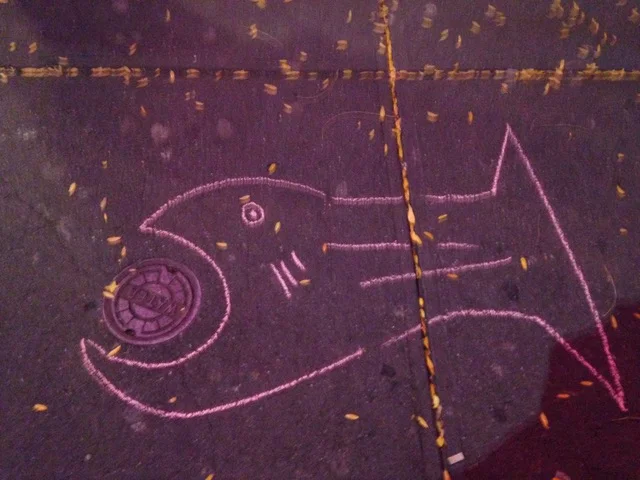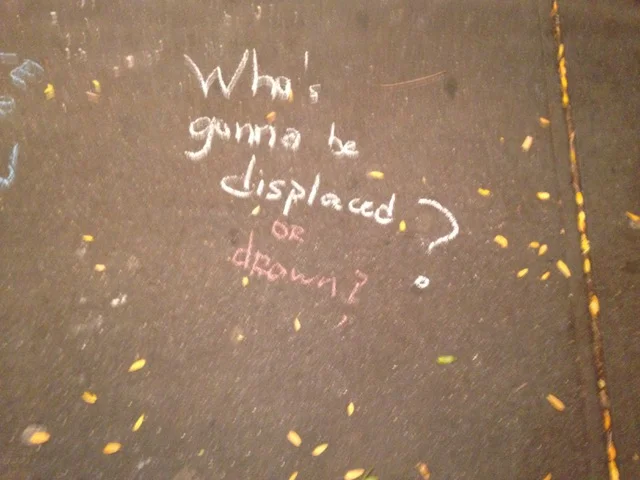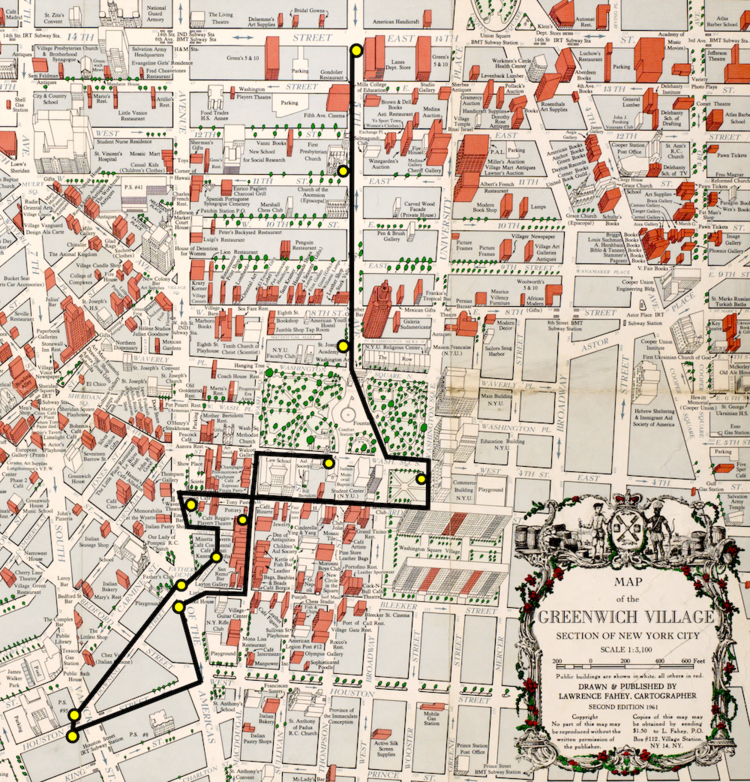As part of my research, teaching, and commitment to public engagement, I have worked with students on developing migration and borders walks. These urban explorations are based on long-standing practices of deepening relationships to the land.
(i) At UNCW, I worked with students from across different departments to put together a Walking Wilmington project. Students designed a series of 4 walking tours that examined aspects such as the impacts of gentrification in the city. Students recorded audio commentaries and connected visuals on Google Maps for participants to ‘check in’ and follow the walks in their own time.
(ii) At The New School, I created a walking project with students on ‘borders seen and unseen’ in Lower Manhattan. Together with Dr. Samantha Maurer Fox, I also co-created a walk on environmental migration which included having participants chalk predicted sea level rises on on the sidewalk, as well as distributing native seed bombs.
Photos by Heather Cunningham, UNCW 2021.
VISUALIZING (IM)MOBILITY: A PSYCHOGEOGRAPHY WALK
ZOLBERG INSTITUTE ON MIGRATION AND MOBILITY, NOVEMBER 7TH, 2018
What parts of the city are open or available to you, socially and materially, and via what pathways? At what scale do you experience and conceptualize the city? How does your experience of city change depending on your perspective—your race, immigration status, profession, and historical moment?
The city is an ecosystem where the built and natural environments merge. Drawing on Guy Debord’s concept of dérive, this walk, designed with Dr. Samantha Maurer Fox, examined places where the boundary between the built and the natural is negotiated. We explored how humans have shaped the natural environment, how we protect it—particularly against climate change—and how institutions and governments use both built and natural environments to create social boundaries.
